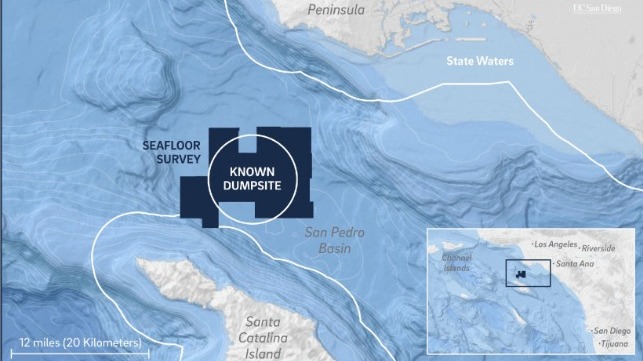Researchers Find Thousands of Barrels of DDT-Laced Waste Just off LA

A team of researchers from Scripps Oceanographic Institute has discovered an astonishing mess just off the coast of Los Angeles. A detailed sonar survey of the San Pedro Basin - the area between San Pedro Bay and Catalina Island - turned up evidence of an estimated 27,000-100,000 barrels of toxic waste, potentially including the toxic pesticide DDT.
Previous research teams have found barrels of waste and high levels of DDT in the sediment in the area, but the new study - which relied on AUVs to capture high-resolution sonar of the seabed - shows that the scale is far greater than believed.
Scientists have also previously found high levels of DDT in marine mammals in the area, including dolphins and sea lions. Exposure to DDT is linked to the development of cancer in sea lions.
“Unfortunately, the basin offshore Los Angeles had been a dumping ground for industrial waste for several decades, beginning in the 1930s. We found an extensive debris field in the wide area survey,” said Eric Terrill, chief scientist of the expedition and director of the Marine Physical Laboratory at Scripps Institution of Oceanography. “Now that we’ve mapped this area at very high resolution, we are hopeful the data will inform the development of strategies to address potential impacts from the dumping.”
The source of the pollution is not known, but a recent report from the Los Angeles Times suggests one possibility. The largest DDT producer in America, LA-based Montrose Chemical Corp., reportedly kept logs of its waste disposal operations. The LA Times reviewed the documentation; according to the report, Montrose may have dumped as many as 2,000 barrels of waste containing DDT every month over the span of 1947 to 1961. Other manufacturers are believed to have used the same area for waste disposal.
“There are several distinct track-line patterns in the surveyed area, suggesting that the dumping was repeatedly done from an underway platform such as a moving ship or barge. Some of those lines are as long as 11 miles and approach state waters,” said Terrill.
DDT is minimally soluble in water, so the pollutants are unlikely to be harmful for human swimmers or beachgoers, scientists say. However, the waste is very hazardous for marine life, particularly the marine mammals at the top of the food chain.
“The uniquely high body burden of DDT in top predators feeding in Southern California waters has been known for some time. The extent of the dumping ground helps to explain some of these previous observations,” said Scripps chemical oceanographer and professor of geosciences Lihini Aluwihare. “These results also raise questions about the continued exposure and potential impacts on marine mammal health."
The scope and cost of a cleanup effort could be vast. It would not be the only mid-century waste dump off the coast of Los Angeles: the adjacent Palos Verdes Shelf has been previously identified as a waste dumping area, and it is designated as a federal Superfund site.
